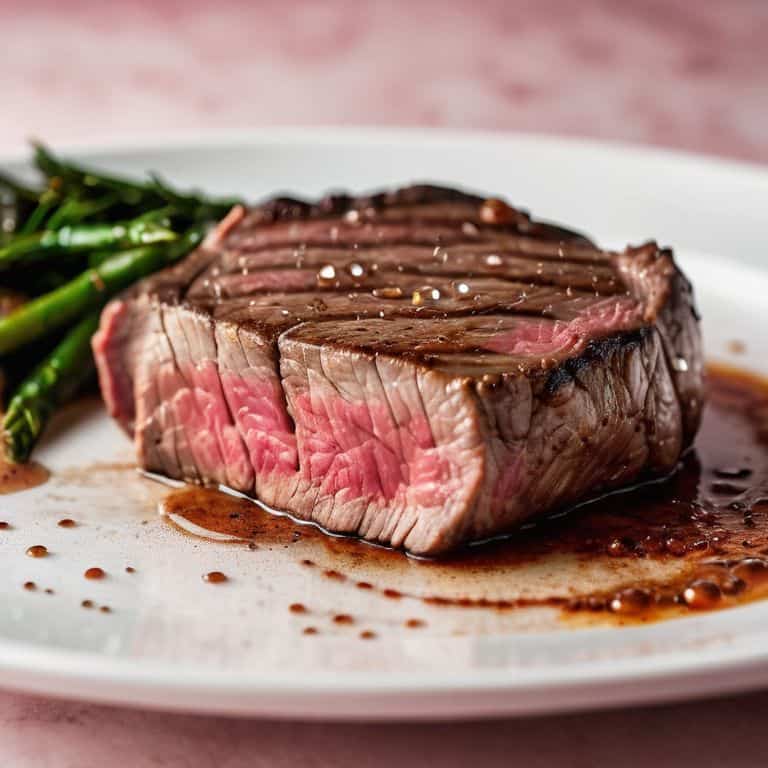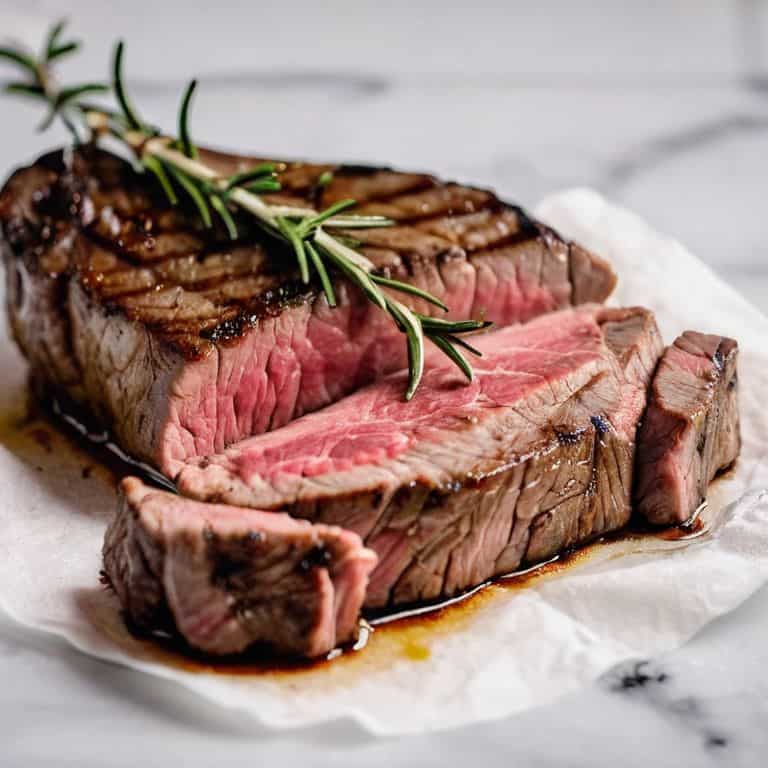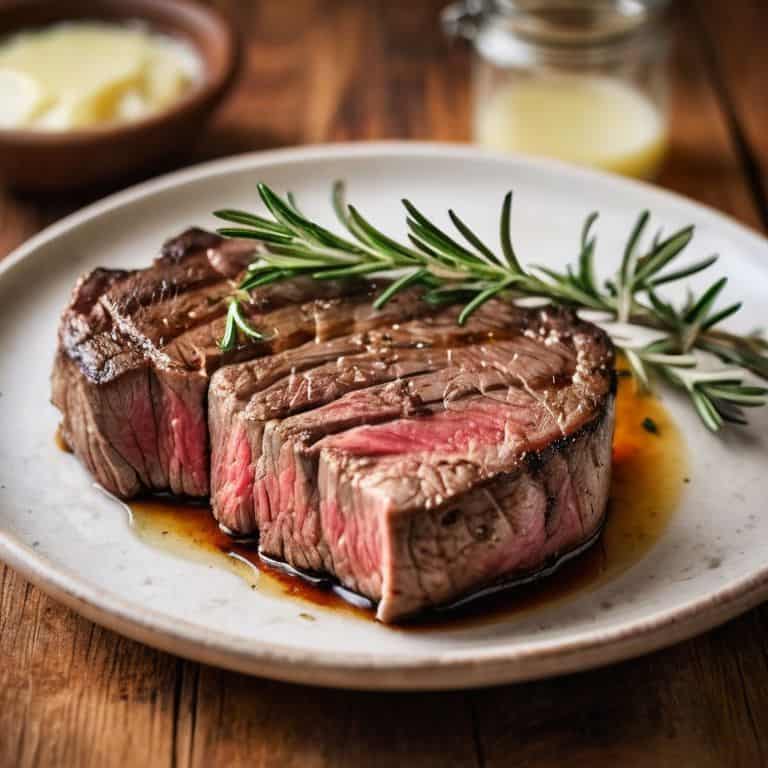As I sat down to enjoy a perfectly grilled steak after a long day of flight lessons, I couldn’t help but think about the importance of how to properly rest a steak. It’s a step that’s often overlooked, but trust me, it makes all the difference. I’ve seen many a steak enthusiast rush into slicing and serving, only to end up with a subpar dining experience. The myth that a steak should be served immediately after cooking is a common one, but the truth is, letting it rest is what allows the juices to redistribute, making each bite tender and flavorful.
So, what can you expect to learn from this article? You’ll get practical advice on the art of letting your steak rest, from the ideal resting time to the best ways to keep it warm without compromising the quality. I’ll share my own experiences, gained from years of experimenting with different techniques, to help you achieve a perfectly rested steak every time. By the end of this guide, you’ll be equipped with the knowledge to take your steak game to new heights, and I’m excited to share this journey with you, one step at a time.
Table of Contents
Guide Overview: What You'll Need

Total Time: 10 to 30 minutes
Estimated Cost: little to no cost
Difficulty Level: Easy
Tools Required
- Tongs or Meat Fork (for handling the steak)
- Plate or Cutting Board (for resting the steak)
Supplies & Materials
- Aluminum Foil (optional for tenting)
- Clean Towel (for drying hands)
Step-by-Step Instructions
- 1. First, let’s tenderly remove the steak from the heat source, whether that’s a grill, skillet, or oven, and place it on a plate or cutting board. This initial step is crucial, as it stops the cooking process and allows the steak to begin its resting period.
- 2. Next, I like to think of this step as “setting the autopilot” – we’re going to let the steak rest for a specific amount of time, undisturbed, to allow the juices to redistribute. For a thicker steak, you’ll want to let it rest for around 10-15 minutes, while a thinner steak might only need 5-7 minutes.
- 3. While the steak is resting, we can prepare the rest of our meal, much like a pilot prepares for landing by going through their pre-landing checklist. This could involve preparing sides, setting the table, or even just taking a moment to relax and enjoy the aromas coming from the kitchen.
- 4. After the steak has rested for the appropriate amount of time, it’s essential to handle it gently to prevent the juices from escaping. Use a pair of tongs or a fork to carefully lift and turn the steak, if needed, to ensure even cooling.
- 5. Now, let’s talk about slicing the steak. You want to slice against the grain, using a sharp knife to make clean, even cuts. This will help the steak retain its tenderness and make it easier to serve.
- 6. As we slice the steak, it’s essential to remember that patience is key. Don’t rush the process, and make sure each slice is cut to your desired thickness. This will ensure that every bite is perfectly cooked and full of flavor.
- 7. Finally, it’s time to serve and enjoy the fruits of our labor. I like to think of this step as “clearing for landing” – we’ve navigated the cooking process, and now it’s time to touch down and savor the experience. Take a moment to appreciate the aroma and presentation of your steak, and then dig in, knowing you’ve taken the time to properly rest it.
Mastering Steak Rest

As I always tell my flight students, mastering any technique requires patience and attention to detail. When it comes to steak resting techniques, it’s essential to understand the importance of allowing the meat to relax and redistribute its juices. This is where the importance of meat temperature comes into play, as it directly affects the tenderness and flavor of the steak.
To avoid overcooking, it’s crucial to keep an eye on the steak’s internal temperature during the resting period. A good rule of thumb is to follow steak resting time guidelines, which typically recommend letting the steak rest for 5-10 minutes before slicing. This allows the juices to redistribute, resulting in a more tender and flavorful steak.
By tenting steak with foil during the resting period, you can help retain heat and promote even cooling. After the steak has rested, it’s time to slice it thinly against the grain. When slicing, remember to use a sharp knife and apply gentle pressure to avoid compressing the meat. This will help preserve the steak’s tenderness and flavor, making every bite a delight.
Slicing With Precision
Now that your steak has rested, it’s time to think about slicing. Just like navigating through a busy airspace, you want to approach this step with precision. A sharp knife is your most important tool here, allowing you to make smooth, even cuts. I like to think of slicing a steak as making a gentle descent onto a runway – you want to be controlled and deliberate in your movements.
As you slice, remember to cut against the grain. This will help ensure your steak is tender and easy to chew, much like how following proper flight protocols ensures a safe and enjoyable journey. By taking your time and being mindful of your slicing technique, you’ll be able to present your steak in a way that’s almost as impressive as a perfectly executed landing.
Tenting for Tender Steak
To take your steak rest to the next level, consider “tenting” – a technique reminiscent of navigating through instrument meteorological conditions. Just as a pilot must rely on instruments to guide the plane, tenting involves covering your steak with foil to create a warm, even environment. This helps retain heat and promote uniform relaxation of the meat’s fibers. By doing so, you’ll be rewarded with a tender, juicy steak that’s sure to impress.
Think of tenting as establishing a holding pattern for your steak – it’s a brief pause before landing, allowing everything to stabilize before serving. As you cover your steak with foil, imagine you’re configuring the aircraft for landing, setting the stage for a smooth touchdown. This simple step can make all the difference in the tenderness and flavor of your steak, and it’s a technique that’s easy to master with a little practice.
Pre-Flight Checklist for a Perfectly Rested Steak

- Let your steak rest for at least 5-10 minutes before slicing to allow the juices to redistribute, just like how I let my plane’s engines cool down after a long flight
- Use a meat thermometer to check the internal temperature of your steak, ensuring it reaches a safe minimum internal temperature, similar to how I monitor my plane’s vital signs during flight
- Tent your steak with foil to retain heat and promote even cooling, much like how I use a checklist to ensure a smooth landing
- Slice your steak against the grain to maximize tenderness, just as I navigate through turbulent air by understanding the wind patterns
- Don’t press down on your steak with your knife or spatula, as this can squeeze out juices and make the steak tough, similar to how I avoid sudden movements during flight to maintain control and stability
Key Takeaways for the Perfect Steak Rest
Let your steak rest for an optimal amount of time, just as you would let an aircraft descend gradually to a safe landing, allowing the juices to redistribute and the tenderness to increase
Employ the technique of tenting your steak with foil to retain heat and promote even cooling, much like navigating through varying weather conditions requires adaptability and patience
Slice your steak with precision and against the grain, using the skills you’ve honed to understand the fundamentals of flight, and appreciate the reward of a job well done, whether in the kitchen or in the cockpit
The Art of Patience
Just as a pilot must trust the instruments and let the plane glide to a safe landing, we must trust the process and let our steak rest, for it’s in the stillness that the true flavors and tenderness emerge.
Daniel Sato
Clearing for Landing: A Safe and Delicious Conclusion
As we touch down on our journey to properly rest a steak, let’s do a quick post-flight review of the key points we’ve covered. We started with the essential step-by-step guide, then moved on to mastering steak rest, including the crucial techniques of tenting for tender steak and slicing with precision. By following these simple, yet effective methods, you’ll be well on your way to becoming a steak resting expert, capable of serving up deliciously tender and flavorful meals to your friends and family.
As you apply these principles to your own cooking, remember that the art of resting a steak is not just about the food itself, but about the patience and attention to detail that goes into preparing it. Just as a pilot must carefully plan and execute each flight, a chef must carefully consider each step of the cooking process to achieve the best results. So, the next time you’re tempted to rush through the resting process, take a deep breath, and let your steak cruise at altitude for a while – your taste buds will thank you!
Frequently Asked Questions
What happens if I don't let my steak rest and slice into it immediately?
Slicing into your steak too soon is like landing without a pre-flight checklist – it’s a recipe for disaster. The juices will spill out, leaving you with a dry, tough steak. Trust me, I’ve seen it happen, just like a rushed landing can lead to a bumpy touchdown. Take a deep breath, let it rest, and you’ll be rewarded with a tender, flavorful steak.
Can I rest a steak for too long, and if so, what are the negative effects on the meat?
Just like overstaying your welcome in a holding pattern, yes, you can rest a steak for too long. Overresting can lead to a loss of juiciness and a cooler-than-desired serving temperature, making the steak feel stale. Think of it as descending too slowly – you want to strike a balance.
Are there any specific types of steak that require a longer or shorter resting time than others?
When it comes to resting time, different steaks have unique needs. For example, a thicker cut like a ribeye or porterhouse may require a longer rest, while a thinner cut like a sirloin or flank steak can get by with a shorter one, much like how different aircraft have varying descent rates.
